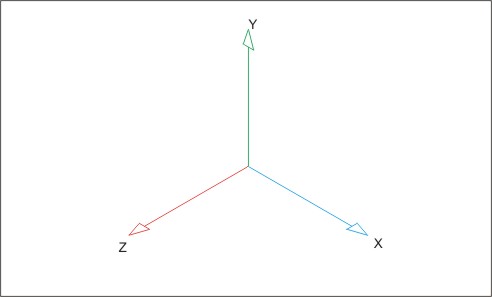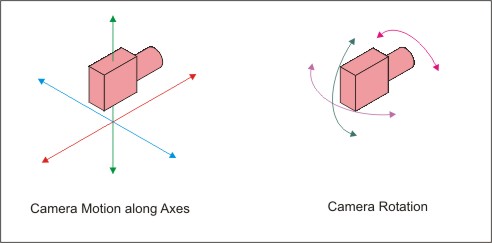
Learning Resources
Lesson
3D animation, is as the name implies, animation that takes place in 3 dimensional space. The 3D space is defined in terms of a 3 axis grid. Like all animation, it takes place over time. Technically speaking it can be called 4D animation, with time being the 4th dimension. Although there are real-world 3D animation techniques, it is primarily thought of as computer software based. (Examples of 3D objects)
3D Worlds
3D animation is a sophisticated process requiring the development of a complete 3D environment. It may be easier to understand the process of 3D animation if it is divided into 3D space, worlds, terrain, actors, textures, cameras, lights, and laws of physics.
- 3D space is constructed primarily in the X, Y, Z Cartesian Coordinate system.
Figure 3D Cartesian Coordinates
- The world is the stage. It is the 3D space in which all the action takes place. It consists of the ground (terrain), plants, buildings, and the like.
- Terrain is a special world construct. It can be built using topographical data so that it exactly replicates a place such as a mountain range, or the surface of Mars. Or, it can be a totally fictitious place. Terrain constructs include water, mountains, grass, trees, rocks, sky, clouds and so on.
- Actors are those objects that will be animated. The only limit is the animators imagination.
- Textures are surfaces effects that are mapped to the surface of objects. Textures give objects a more realistic look. Realistic fur on the characters in Monsters Inc. for example gave the movie a much more believable look.
- Cameras are used to record the action in the 3D world. The camera can be moved in real time as the action unfolds. It can be zoomed, panned, moved up and down, moved across the scene, and rotated.
Figure Camera Movement in 3D space
- Lights illuminate the scene. By default most programs have one or more lights turned on. If you turn them off the scene goes dark. Multiple lights can be added, and placed in any location. Lighting characteristics of intensity, colour, focus, filtering and so on can be applied to give the scene any look you want. Lights can be moved in the same manner as cameras.
- Laws of physics including effects of gravity, Newton's laws, momentum, and acceleration are applied in some 3D environments.
For Additional Information
If you wish additional information on 3D animation here are good starting points
- 3D resources site
- Sources of free, open-source 3D software
- 3D animation lessons (counting backwards from the most recent)
- Anim8or. Open-source 3D animation program, lists many sample animations, tutorials and related web sites.
- Blender. Home of an open-source 3D animation program
- POVRAY. Point of View Ray Tracing program. This site is part of an extensive set of related sites, all of which provide a variety of lessons, tutorials, and examples of work done with this long-standing, well-respected program
- Commercial programs
- Bryce
- Poser
- 3D StudioMax
- For a comprehensive listing of 3D animation software, in a variety of categories, check out the 3D software section down the left side of 3dlinks.com
Activity
Assigned Activities
The purpose of this activity is to develop knowledge about the applications of 3D animation
- Research and report on 3D animation software and on applications for 3D animation. Example applications include navigation, resource mapping, building and product design, movies and animation, military, and space
- Create a web entry for your report in your course portfolio
- Publish the web portfolio to your course web
Test Yourself
There is no self test for this lesson.

